Yellow River Marsh Aquatic Preserve
NEWS | RESOURCES | CALENDAR
Yellow River Marsh Aquatic Preserve is located in south-central Santa Rosa County in the western Florida Panhandle. This preserve encompasses about 11,000 acres of the Yellow River, Blackwater Bay and East Bay in the western Florida Panhandle. Located northwest of Yellow River Marsh Aquatic Preserve are the two closest population centers: the city of Milton, the county seat of Santa Rosa County and the city of Bagdad. Interstate 10 is northwest of this aquatic preserve.
Yellow River Marsh Aquatic Preserve contains all of the sovereign submerged state-owned lands of the Yellow River, Blackwater Bay and East Bay, within the aquatic preserve boundary. Rare and imperiled natural communities can be found within or adjacent to the aquatic preserve boundaries. The publicly owned Yellow River Marsh Preserve State Park, part of the Florida’s Division of Recreation and Parks, is directly connected to this preserve at the western side of the aquatic preserve. The largest landholding adjacent to the aquatic preserve is Eglin Air Force Base. The base is responsible for managing most of its lands, especially the low-lying wetlands designated as Eglin Wildlife Management Area.
Santa Rosa
1970
10,718
Open 24/7 dependent on public access points managed by other entities.
Aquatic preserves, estuary, mollusk reef, Outstanding Florida Waters, salt marsh, etc.
Boating, fishing, kayaking, snorkeling, diving, wildlife viewing, nature photography
VISITATION INFORMATION
Parking
Yellow River Marsh Aquatic Preserve is remote, offering excellent recreational opportunities, The pristine preserve, in conjunction with adjacent conservation lands, supports a diverse ecosystem, benefiting both the natural habitat and economy of surrounding populations. Yellow River Marsh Aquatic Preserve’s natural coastal resources and recreational opportunities draw a variety of year-round nature enthusiasts with activities including boating, fishing, kayaking, hiking and bird-watching.
Yellow River Marsh Preserve State Park has a small parking area, a gazebo and a short trail, but no access to the water. There are boat ramps along the Yellow River, which is a designated paddling trail. The river borders Eglin Air Force Base, which maintains several primitive launches and recreation areas. Be sure to obtain a base recreation permit if you plan to use these, including stopping for lunch.
Boat Access/Ramps
There are several public ramps located along the boundary of the aquatic preserve, including:
- City of Milton Marina
- Brown’s Fish Camp Boat Ramp
- Dickerson City Boat Ramp (small vessels only)
- Yellow River Canoe Launch
Facilities
There are also many public and private ramps lying within close proximity to the aquatic preserve. All facilities are either privately owned or owned by the county. These are all well maintained and lightly used. Adjacent launches are more frequently used due to their protected nature and proximity to calmer conditions for motorized recreational activities such as tubing and fishing.
Contact
Paige Plier
850-471-6027
Paige.Plier@FloridaDEP.gov
History
This aquatic preserve was designated in 1970 for the primary purpose of preserving the biological resources in the area and maintaining these resources in an essentially natural condition. The aquatic preserve was also selected as a Gulf Ecological Management Site for its ecological significance in the Gulf of America region.
The aquatic preserve is a vital component in the Pensacola Bay System because it has been the least impacted by development and pollution. There are more than 1,000 acres of salt and freshwater marshes and approximately 1,500 acres of forested wetlands within the aquatic preserve, which provide filtration from pollutants and serve as natural flood control. The remainder of the aquatic preserve is open water. The uplands bordering the aquatic preserve consist primarily of residential areas and public managed areas including substantial additional forested wetlands.
Eglin Air Force Base and the Northwest Florida Water Management District manage almost half of the uplands adjacent to the aquatic preserve, which help buffer impacts to water quality.
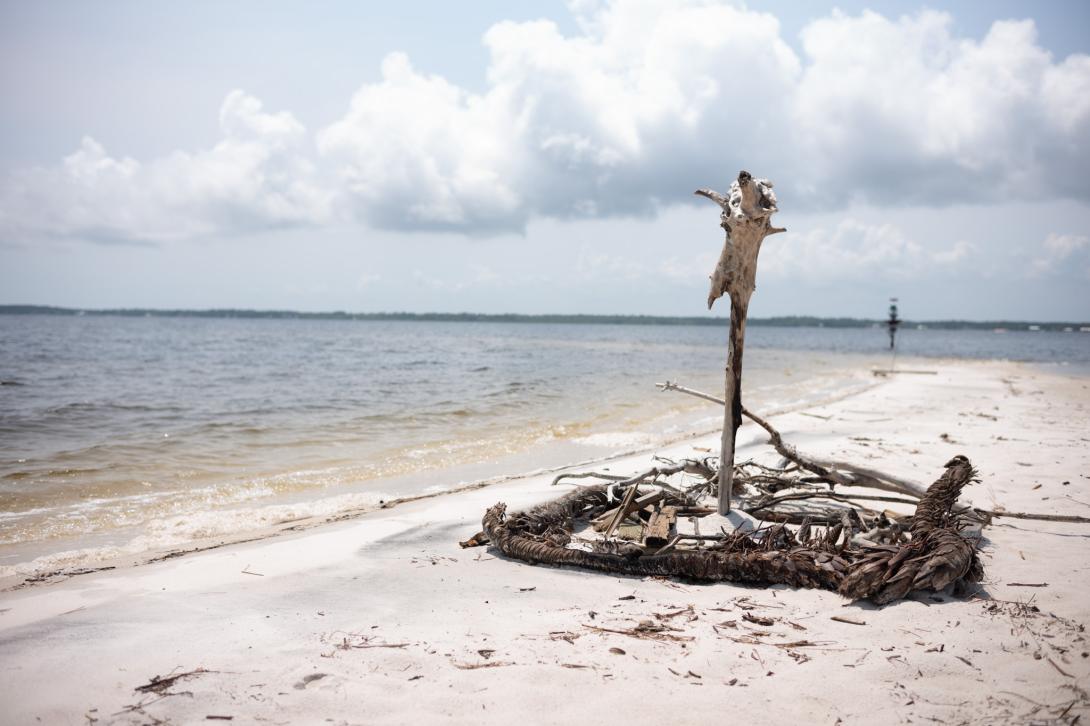
PUBLIC ENGAGEMENT OPPORTUNITIES
Volunteer Opportunities
Staff conduct education and outreach programs through participation in local events, such as the Seagrass Awareness Festival and working with the schools by visiting or conducting field trips. Staff from the Northwest Florida Aquatic Preserves are often involved with research efforts at the college level as well as with county agencies.
Events
- Seagrass Awareness Festival
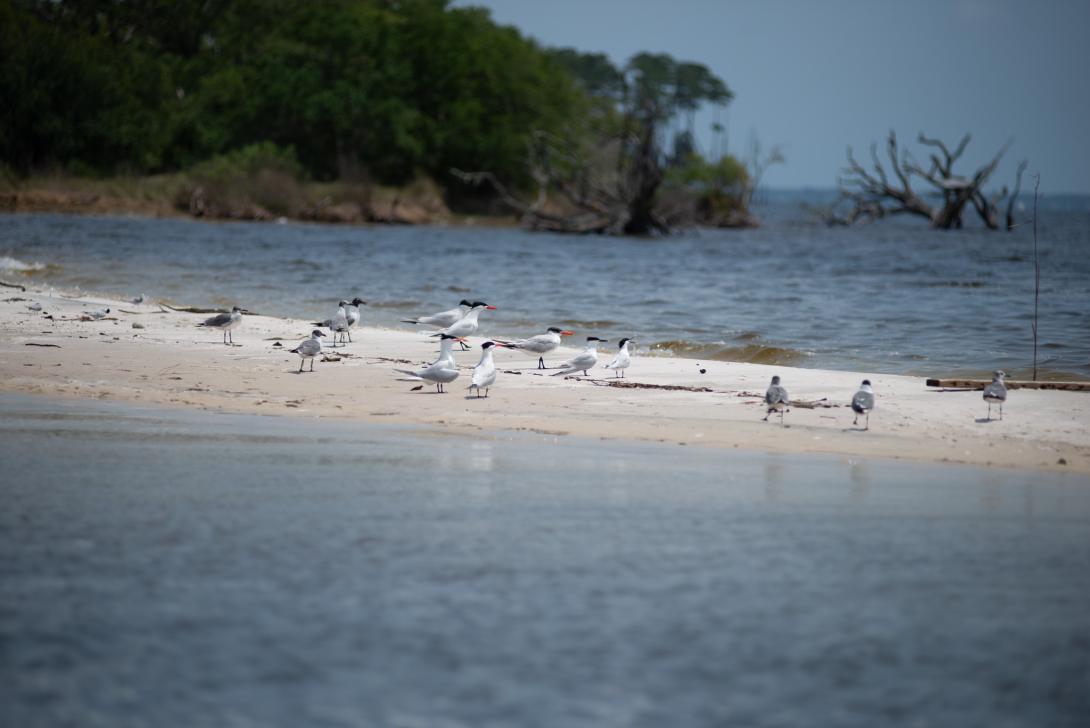
Educational Opportunities
Education and outreach efforts for Yellow River Marsh Aquatic Preserve include workshops, conferences, symposiums and research throughout the region. Public talks at school groups, garden clubs, nonprofit organizations, as well as facility tours are often given to educate the community about the program and ongoing management, education and restoration efforts. Through formal program with other locals, like Bringing Back the Bayous, Grasses to Classes, Bay Days, coastal cleanups and project tours, we can raise awareness to citizens on water quality, invasive/exotic control, habitat concerns and restoration, as well as many other topics of interest to the community.
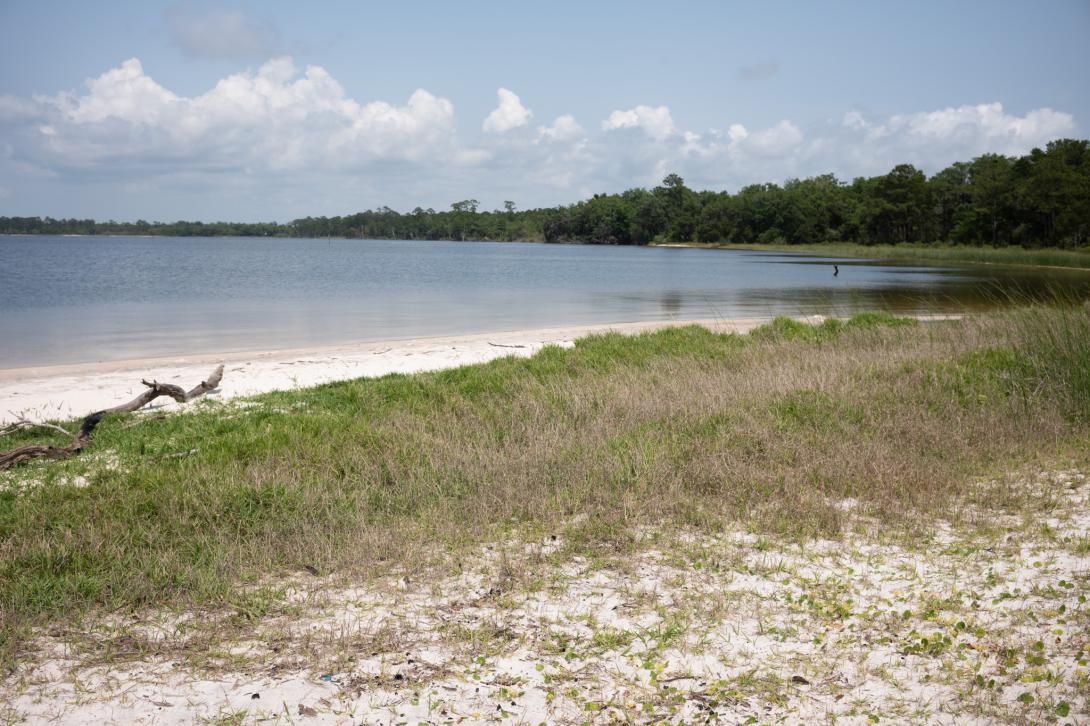
Conservation Efforts
There are several areas in the aquatic preserve that are of concern regarding the presence of invasive non-native species, such as cogon grass. Invasive non-native animals include two species of Asian clam, nutria and feral hogs. Feral hogs are among the most detrimental, posing a significant threat to ecosystem function and native species. They prefer forested, remote wetlands and primarily feed on plant material but are opportunistic and have been documented to consume native invertebrates and vertebrates. Their wallowing behavior impacts water quality and disturbs native vegetation, allowing non-native plants to establish in new areas.
The loss of shoreline along Yellow River Marsh Aquatic Preserve is generally the result of increased erosion due to wave energy amplified by coastal armoring on either side. Within the past 10 years, 80 feet of shoreline has been lost, resulting in severe coastal flooding of a coastal pine flatwood forest. The restoration of this coastal transition zone will provide room for habitat migration with sea level rise and is a focus of the resource management program. The project places vertical oyster reef structures along approximately 1,000 linear feet of shoreline to reduce wave energy and is expected to grow an established living oyster reef that would enhance habitat and emergent vegetation within the aquatic preserve. Staff are also pursuing other projects to address the gradual decline of estuarine habitat in the aquatic preserve.
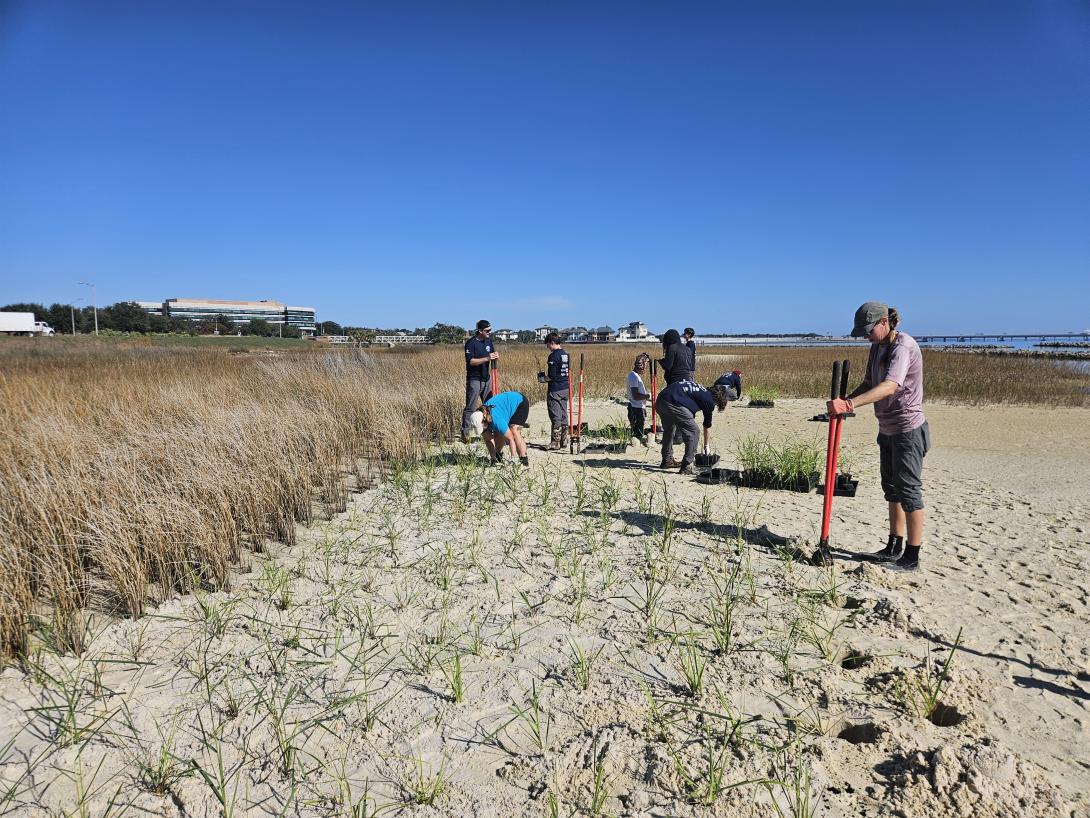
Project Greenshores
Project GreenShores is a multimillion dollar habitat restoration and creation project in downtown Pensacola along the urban shoreline of Pensacola Bay. This habitat restoration effort partners DEP's Northwest Florida Aquatic Preserves with the city of Pensacola, Escambia County, the Ecosystem Restoration Support Organization, the EPA Gulf of America Program, the National Fish and Wildlife Foundation, the U.S. Fish and Wildlife Service, NOAA, Gulf Power, local agencies, businesses and volunteers in a community-based effort to restore oyster reef, salt marsh and seagrass habitat within the Pensacola Bay System. Restoring the Pensacola Bay estuary to its historic state stabilizes shorelines and provides essential habitat for wildlife propagation and conservation.
Project GreenShores was constructed in phases and consists of two adjacent sites in Pensacola Bay. Site 1 was completed in 2003 and consists of 15 acres of estuarine habitat composed of seven acres of oyster reef and eight acres of salt marsh/seagrass habitat. Site 1 has received several awards including the 2003 Coastal America Partnership Award, the 2004 EPA Gulf of Mexico Program’s Gulf Guardian Award and the Conservation Award from the Francis M. Weston Audubon Society in 2007.
In 2003, the first phase at Site 1 of Project GreenShores was completed with minimal replantings in the summer of 2004. Seven acres of constructed oyster reef consists of 14,000 tons of Kentucky limestone, 6,000 tons of recycled concrete and 40 wave attenuators. The eight-acre salt marsh incorporated 35,000 cubic yards of sand and 40,000 smooth cordgrass (Sporobulus alterniflorus plants. Project GreenShores Site 2, constructed in the summer of 2007, encompasses the area of Pensacola Bay from the western shore of Muscogee Wharf up to and including Hawkshaw Lagoon. This site consists of two submerged breakwaters of approximately 600’ x 150’x 0.5’ (below Mean Low-Water line) which were constructed using 25,000 cubic yards of recycled concrete obtained from a decommissioned airfield at NAS Pensacola. The submerged breakwaters will function to reduce fetch-driven wave energy before it reaches the intertidal marsh islands and shoreline. In time, the breakwaters will also serve as a living oyster reef as oyster larvae settle and grow on the substrate provided. Three intertidal marsh islands were constructed using 16,000 cubic yards of spoil material from a previous dredge of the Escambia River.
The islands were planted with 30,000 smooth cordgrass, grown at the DEP Nursery facility, during a substantial community volunteer effort with the help of local Boy Scout, Cub Scout and Girl Scout troops as well as numerous individuals and civic groups in September of 2007. Additional breakwater and salt marsh areas was constructed in the next few years under NRDA funding.
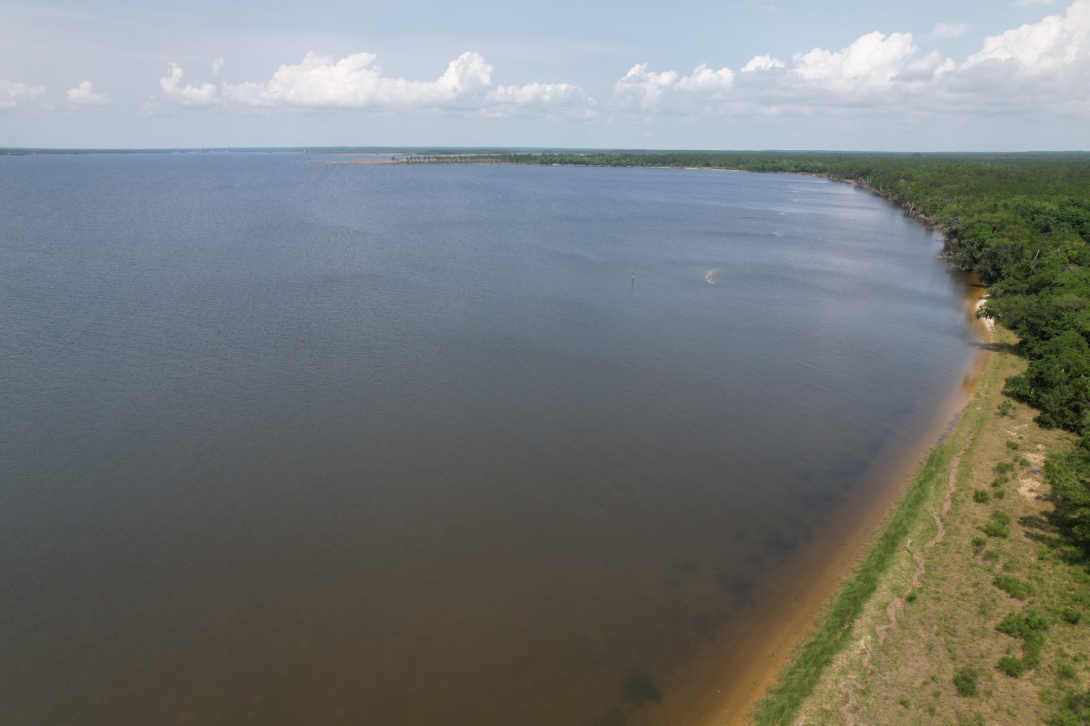
Ongoing Research
Continuous water quality monitoring is conducted within Yellow River Marsh Aquatic Preserve, measuring the parameters of turbidity, conductivity, salinity, temperature, dissolved oxygen and pH. Several salt marsh and oyster restoration projects have been implemented along Yellow River Marsh Aquatic Preserve. This location remains an important site for eco-restoration, monitoring and coastal resiliency projects like Living Shorelines.
Staff and partners have conducted monitoring programs of gulf sturgeon, the gulf saltmarsh snake, diamondback terrapin and several other species of concern. Since the Deepwater Horizon oil spill, focus has shifted toward water quality monitoring and sedimentation.
Partner Groups
- Eglin Air Force Base
- Northwest Florida Water Management District
- Yellow River Marsh Preserve State Park
- Choctawhatchee National Forest
- Escribano Point Wildlife Management Area
- Garcon Point Water Management Area
- U.S. Environmental Protection Agency
Through the Pensacola and Perdido Bay Estuary Program’s Collaborative Science to Assess Restoration Success (C-STARS) project, our team has been investigating the relationship between living shorelines and seagrasses. At one site, Project GreenShores (PGS), a large-scale living shoreline site in downtown Pensacola, 2 different species of seagrasses (Halodule wrightii and Ruppia maritima) have been confirmed, but not mapped.
"A trip on the Yellow River is like going back in time. Its tall-forested banks, pristine water quality and productive fishing create a place one can go to be completely surrounded by nature. The Yellow River Preserve is one of Florida's most precious contributions it has for its future generations."
- Ernie Rivers, River Keeper and Bream Fisherman Associate of Northwest Florida